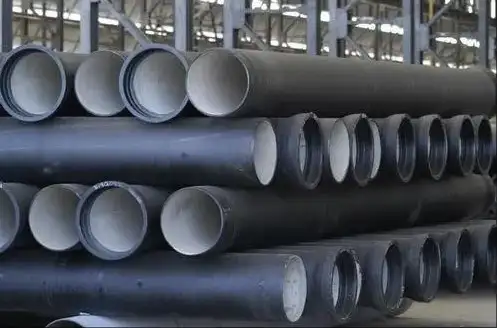Ductile iron pipes are widely used in water distribution systems due to their strength, durability, and resistance to corrosion. The price of a 4-inch ductile iron pipe varies based on several factors, including material specifications, joint types, and regional market conditions. This guide provides an in-depth look at the current pricing, factors affecting costs, and answers to common questions regarding 4-inch ductile iron pipes.

Understanding Ductile Iron Pipe
Ductile iron pipe is a type of cast iron pipe known for its enhanced strength and ductility, achieved through the addition of small amounts of magnesium. These pipes are commonly used in water and wastewater systems, offering advantages such as:
-
High Strength: Able to withstand high internal pressures.
-
Corrosion Resistance: Suitable for various soil conditions.
-
Longevity: Extended service life compared to other materials.
The price of ductile iron pipe is influenced by factors such as diameter, class, joint type, coating, and regional market conditions.
Factors Influencing the Price of 4-Inch Ductile Iron Pipe
Several elements contribute to the cost of a 4-inch ductile iron pipe:
1. Pipe Class
The class of ductile iron pipe indicates its pressure rating. Common classes include:
-
Class 52: Standard pressure rating.
-
Class 350: Higher pressure rating.
-
Class 250: Lower pressure rating.
Higher-class pipes generally cost more due to increased material strength and pressure handling capabilities.
2. Joint Type
The method of connecting pipe sections affects the price:
-
Tyton Joint: Push-on joint with a gasket.
-
Mechanical Joint: Bolted connection.
-
Restrained Joint: Prevents movement under pressure.
Restrained joints are typically more expensive due to their added functionality.
3. Coating and Lining
Protective coatings and linings enhance corrosion resistance:
-
Cement Mortar Lining: Standard for potable water.
-
Polyethylene Encasement: Additional protection for aggressive soils.
Specialized coatings increase the overall cost of the pipe.
4. Length and Weight
Standard lengths are typically 18 or 20 feet. Longer or heavier pipes may incur higher shipping costs.
5. Market Conditions
Regional demand, supply chain factors, and raw material costs can cause price fluctuations.
Price Comparison by Region and Supplier
| Supplier | Price per Foot | Joint Type | Coating/Lining | Region |
|---|---|---|---|---|
| A. Louis Supply | $53.25 | Tyton Joint | Standard | Northeast Ohio |
| Louisville Water Company | $41.82 | Not specified | Not specified | Louisville, KY |
| Fairfax Water | $22.71 | Zinc Coated | Cement Mortar | Fairfax, VA |
| MachineMFG | $22.71 | Not specified | Not specified | China |
| Alibaba (Bulk Purchase) | $365.00 | Not specified | Not specified | China |
Note: Prices are indicative and may vary based on specific requirements and market conditions.
Cost Estimation for Installation
The total cost of installing a 4-inch ductile iron pipe includes:
-
Material Costs: Based on the price per foot.
-
Labor Costs: Installation labor rates vary by region.
-
Equipment Costs: Excavation and trenching equipment.
-
Permitting and Inspection Fees: Local government requirements.
On average, the installed cost ranges from $8.40 to $24.00 per linear foot, depending on the factors mentioned above.
Advantages of Using Ductile Iron Pipe
Ductile iron pipes offer several benefits:
-
Durability: Long service life with minimal maintenance.
-
Strength: Can withstand high internal pressures.
-
Corrosion Resistance: Suitable for various soil conditions.
-
Versatility: Applicable in a wide range of installations.
Frequently Asked Questions (FAQs)
1. What is the standard length of a 4-inch ductile iron pipe?
Standard lengths for ductile iron pipes are typically 18 or 20 feet. However, custom lengths can be ordered based on project requirements.
2. How does the class of ductile iron pipe affect its price?
The class indicates the pressure rating of the pipe. Higher-class pipes, such as Class 350, are designed to handle higher pressures and are generally more expensive due to increased material strength and manufacturing processes.
3. What are the benefits of using restrained joints in ductile iron pipes?
Restrained joints prevent movement under pressure, which is crucial in certain applications where soil conditions or water hammer could cause displacement. While more expensive, they provide added security and stability to the pipeline system.
4. Why do prices vary between suppliers and regions?
Prices can vary due to factors such as local demand, transportation costs, regional economic conditions, and supplier pricing strategies. It’s essential to obtain quotes from multiple suppliers to ensure competitive pricing.
5. Are there any cost-effective alternatives to ductile iron pipes?
While ductile iron pipes offer excellent durability and strength, alternatives like PVC or HDPE pipes may be more cost-effective for certain applications. However, these materials may not offer the same level of performance in high-pressure or corrosive environments.
Conclusion
The price of a 4-inch ductile iron pipe varies based on several factors, including pipe class, joint type, coating, and regional market conditions. Understanding these elements can help in making informed decisions when procuring ductile iron pipes for water distribution systems.
For accurate pricing and to ensure the best fit for your project, it’s advisable to consult with suppliers and obtain detailed quotes that consider all relevant factors.
